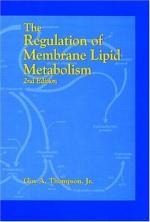|
This section contains 754 words (approx. 3 pages at 300 words per page) |

|
Lipids belong to a broad class of animal- and plant-derived compounds which include fats and oils. They are insoluble in water because they are composed primarily of long chains of hydrocarbons. Some lipids, such as fats, are solid or semisolid at room temperature while others, such as oils, are liquids. Examples of naturally derived lipids include butter, lard, tallow and fish oil from animals and cottonseed, peanut, soy, and corn oil from plants. Lipids are important dietary constituents and are present in many foods; in addition they are used in the production of many industrial products such as cosmetics, cleansers and lubricants.
Depending on their chemical composition, lipids are classified as hydrocarbons, simple lipids, or complex lipids. Hydrocarbons are the most basic form because they only contain carbon and hydrogen. Simple lipids consist of carbon, hydrogen and oxygen; complex lipids contain one or more additional elements, such as...
|
This section contains 754 words (approx. 3 pages at 300 words per page) |

|


